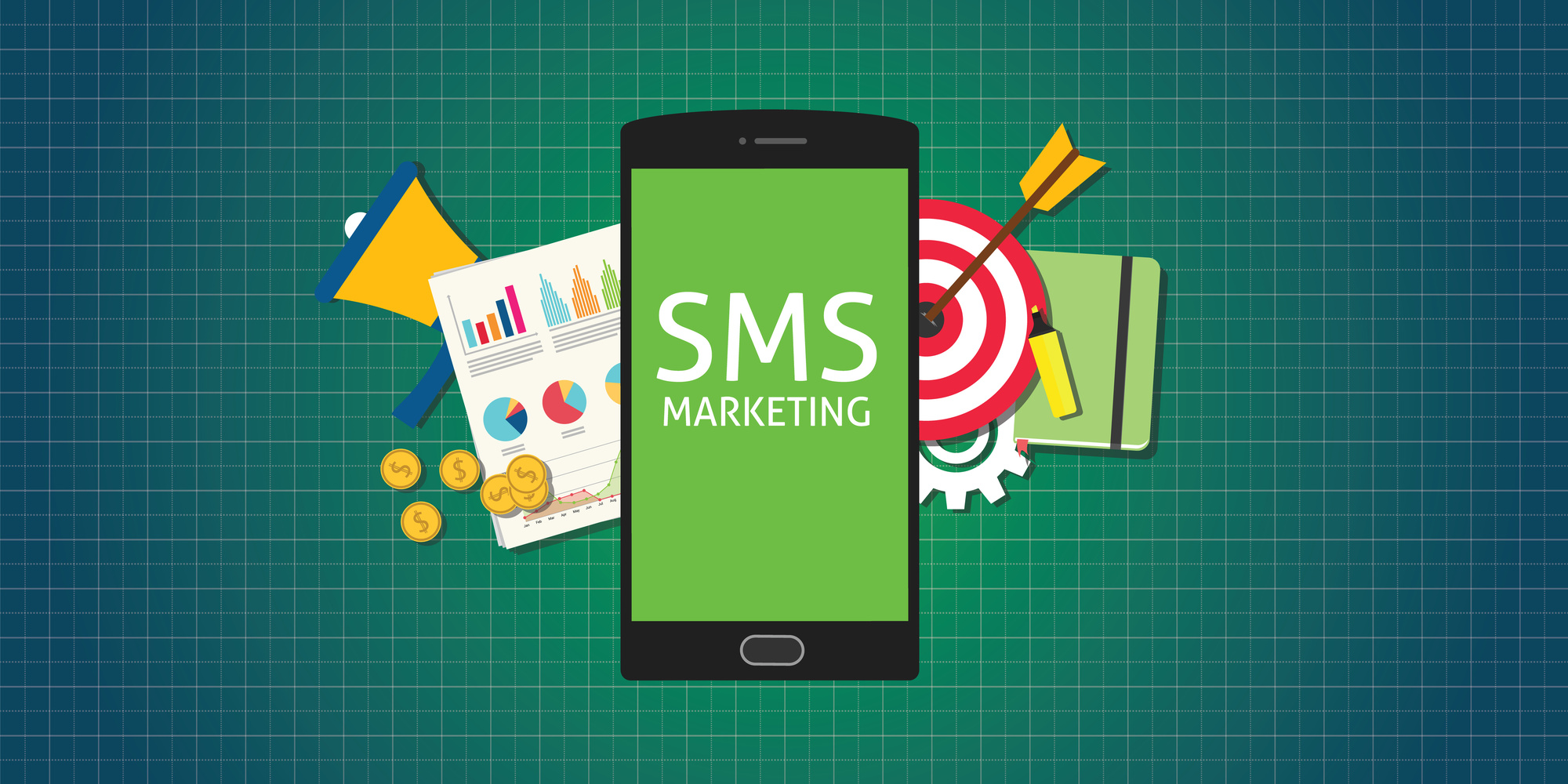Businesses rely heavily on digital marketing tools and strategies to boost brand recognition and drive sales. Digital marketing tools and methods, including search engine optimization (SEO), social media, content marketing, and video marketing, help them grow their businesses and reach a vast customer base.
However, some businesses overlook that integrating SMS and voicemail software solutions with digital marketing tools can lead to positive outcomes and better sales performance and customer service.
SMS and voicemail aren’t new technologies. They have existed for some time, and many businesses still use them. Yet, it’s an underused marketing strategy that can transform how small businesses sell themselves if they use it.
Here is a comprehensive overview of how small businesses can get the most out of SMS and voicemail marketing.
What Is SMS and Voicemail Marketing?
A short message service (SMS) is what is commonly referred to as a text message. In comparison, a voicemail is an electronic message a caller leaves for the recipient to listen to, typically on the phone or other communication device.
Using text messages or voicemails to communicate with, inform, and promote your products or services to current and potential clients is known as SMS and voicemail marketing.
This kind of marketing is effective since only those customers or users who voluntarily give their phone numbers can receive promotional ads from your business. It is also effective since it enables you to send brief messages that are easily understandable.
Is SMS And Voicemail Marketing Still Important In 2023?
The fact that practically everyone has access to a mobile phone is one of the main reasons why SMS and voicemail marketing is essential. Text message open rates are typically high since they are delivered directly to people’s mobile devices.
Moreover, you don’t necessarily need internet access to send or receive a message. All you need is a phone with an active phone number and a service provider. So this allows you to include non-tech-savvy customers in your marketing campaigns.
Additional Benefits of SMS And Voicemail Marketing
- Higher Engagement and Open Rates – Engagement rates for SMS and voicemail are typically higher than those for other direct marketing channels because they operate on an opt-in basis. Individuals who are currently subscribers are more inclined to respond to your messages because they are already acquainted with the organization. Higher engagement could translate to increased loyalty and, ultimately, higher sales.
- Instant Reach – You may instantly reach target audiences using SMS and voicemail marketing. Other marketing channels, such as email, may not be optimal for communicating time-sensitive information. That’s because users cannot always access or consistently open personal or business emails. As a result, SMS and voicemail marketing are the way to go if you have time-sensitive promotions or offers.
- Cost-effective – Due to their lower cost per message compared to other forms of marketing, SMS and voicemail marketing are typically more cost-effective. For instance, doing an SMS marketing campaign will cost you substantially less than an outbound telemarketing campaign if you have a significant lead or contact list.
- Enables Personalization – Segmenting your audience or subscribers allows you to develop personalized messages that engage recipients. Depending on the buyer personas of each segment, you can push promotional content to different customers within that segment.
- Enables Performance Tracking – Most SMS and voicemail marketing solutions have tracking features. Tracking the performance of your campaign becomes significantly easier. You can track metrics such as click-through rate, open rate, and other pertinent statistics.

How To Establish SMS And Voicemail Marketing Strategies
- Set Goals
Setting goals guides your entire campaign and makes decision-making much more straightforward. Your goals will determine the metrics you must track during the campaign. Campaign goals include raising sales, driving traffic, or boosting engagement. Understanding your goals can assist you in determining which tools and resources you will require to achieve them.
- Define Target Audience
Defining your target audience is the next step to creating an SMS and voicemail marketing strategy. This step involves outlining your target audience’s needs, concerns, desires, and preferences. You’ll need this information when crafting personalized messages for your customers. Businesses can use various data sources to understand their audiences better, including purchase data, surveys, questionnaires, and social media analytics.
- Create A Contact/Subscriber List
Following that, you must create a contact list for your campaigns. It should be a piece of cake if you’ve profiled your target audience.
- Invest In SMS And Voicemail Marketing Software
Keep in mind that people aren’t always available to take calls. When someone is busy, there’s a big chance they’ll decline your call, especially if you’re calling from an unknown number. Therefore, it’s better to leave a voicemail or text message. It allows them to listen to or read your message whenever they’re free.
SMS and voicemail marketing improves the customer experience. It saves time for your call center agents, who won’t have to make several calls that may or may not end in a positive outcome. But you can take things further by automating your workflows using ringless voicemail and text message marketing software.
This software solution allows you to automate and manage marketing campaigns more efficiently. Ringless voicemail enables you to send pre-recorded messages to several recipients simultaneously. Therefore, voice mail drops are generally effective since they prevent you from disrupting clients. Plus, it’s affordable, so you won’t have to break the bank.
- Prioritize System Or Software Integration
The corporate marketing plan can incorporate several elements and tools, including SMS and voicemail. Every aspect of the marketing plan should be in alignment. Therefore, your company must consider how voicemail and text messages support corporate marketing goals. It will contribute to streamlining the marketing function’s overall workflow.
SMS Marketing Use Cases
SMS is a very effective tool for optimizing the customer experience. There are many cases wherein you can use SMS as a marketing tool. Here are some simple use cases.
- Order Confirmation – Once an order has been placed, you can send a confirmation message to the customer. You can add a link to your website that allows the customer to see the order’s progress. Most online shopping and delivery service platforms do this because it helps to improve the customer experience.
- Customer Service – Most people may be familiar with these as many customer service agents use them to maintain communication with business clients. For example, suppose you’re an e-commerce company, and a customer’s order has been delayed. In that case, you can send a customer service SMS apologizing for the inconvenience and mentioning what caused the delay briefly. Then advise them when they can expect the order.
- Discounts and Offers – You can send special offers to those who opt to sign in to your subscriber list. One of the best-selling points for subscribing could be that they get early access to specific deals, discounts, and offers. It, in turn, will make them feel appreciated and may increase loyalty.
- Restock/’Product Now In Stock’ Alerts – If a customer had a specific item on their wish list that was out of stock, you could notify them once it’s in store via SMS. Customers may find this feature helpful because it helps them not miss out on their desired products.
- Product Releases – If you’re about to launch a new product or service, SMS and voicemail marketing can help build awareness. Sending product release messages will help to build hype and anticipation for your product before launch. It may prompt people on your subscriber list to preorder your products.
- Event Announcement – SMS and voicemail marketing can also be great for promoting events you’re organizing. You can easily send subscribers links, enabling them to join on the company or event website. You could also send voicemails inviting them to join your special event. Also, those who would have reserved seats for the event may opt to receive messages to remind them when the event is drawing near.
Note that there are several other use cases that small businesses can use when trying to market their business. But the ones mentioned above are perhaps the most notable.
Best Practices
- Keep Messages Short
When sending SMS messages, realize you’ll be limited to 160 characters. Therefore, every word counts. There’s no need to add unnecessary details. Get straight to the point. Remember, people are already used to receiving short text messages. It may be slightly off-putting if they see a long-winded message. So, you need to keep things short and sweet.
- Get Permission
From a legal standpoint, you must get the client’s permission to send promotional messages. It implies that you must find a way for people to opt into your subscriber list.
You could make a link available on your website, enabling people to opt in or out easily. If you have a physical store, you could ask customers if they wish to be added to the subscriber list. Whatever the case, it’s always best to get permission first.
Remember, you need to put your customer first. Consider how they might feel if you constantly send messages they may not be interested in. It may reflect poorly on your brand. Instead, build a subscriber list with clients who want to be on the list.
- Segment Your Audience
Targeted campaigns tend to be more effective than more generalized ones. It’s best to segment your market based on the variable of your choice. You could segment your market by age, behavior, gender, demographic, or geography.
You want to ensure the recipients will perceive each message you send as valuable. That’s why personalization matters. The more tailored your SMS and voicemail marketing campaign, the better.
- Avoid Spamming
Sending notifications and updates through voicemail and text could quickly become spam if you’re not careful. Sending too many messages may reflect poorly on you and could become annoying to customers, especially if they aren’t adding value to the customer. So, manage the frequency with which you send SMS or voicemail messages to your audience.
- Proofread Messages Before Sending
It’s always good to proofread your content before sending it. It doesn’t matter how short your message is. You can still make an error. Making spelling or grammatical errors can affect your brand’s reputation. You can’t afford to make spelling errors when sending text messages, particularly if you’re a small business. Therefore, you should ensure to proofread your messages always.
- Avoid Abbreviations
Avoid abbreviations in your SMS or voicemail messages because they could make your business seem informal or unprofessional. Remember that people tend to have short attention spans. You don’t want them to overthink or look up abbreviations when reading your messages. Abbreviations are unnecessary and will certainly reflect poorly on you and your business.
- Include A Call-To-Action (CTA)
Effective messages have a great CTA. It refers to any statement in the message prompting the recipient to take a specific action. Ideally, your messages should contain one CTA because adding several may affect its structure and flow. You can use phrases like ‘click here,’ ‘learn more,’ or ‘follow this link’ to encourage them to take action. Just avoid sending multiple links.
- Test And Optimize Campaigns Regularly
Regular testing and optimization are a standard part of marketing campaign management. You always need to monitor how your campaign is going so that you can adjust. That’s why tracking campaign analytics is important. Things can change over time. So, you must be willing to pivot when things change.
- Create Valuable Content
Providing valuable content or information is the best way to keep customers engaged. It could also contain something simple like a birthday gift voucher you can send on the recipient’s birthday. Whatever the case, realize that people usually engage with relevant and valuable content. Aim to create and provide just that.
- Realize That Timing Matters
It’s essential to master the art of timing when it comes to this kind of marketing. Even though SMS and voicemail messages aren’t intrusive, you still need to send the right messages at the right time for the most significant impact. You could send the wrong message at the wrong time and achieve the wrong outcome.
The ‘right time’ to send a text or voicemail is subjective. It depends on various factors. You may not always get it perfect all the time. But it would be helpful to understand your environment and target audience’s preferences and establish it.
For example, if you have an online clothing store, you should promote winter clothes during or just before winter approaches, not in peak summer months. Also, it may not be wise to send messages at 4 a.m. because most people will be sleeping. Instead, send messages in the morning or afternoon.
Conclusion
SMS and voicemail marketing is one of the most effective ways a small business can generate leads and maintain customer engagement.
As mentioned, this marketing approach usually has the highest open and engagement rates out of all the other methods. It’s mainly because SMS and voicemail are more direct and personal forms of marketing. You usually need permission to add someone to your subscriber list, and those people are generally responsive.
Furthermore, SMS marketing is highly cost-effective, which is excellent news for small businesses. So, if you want to boost your marketing efforts this year, SMS and voicemail marketing are worthy considerations. There are several software options to choose from. You must select one that best suits your business and meets your needs.




